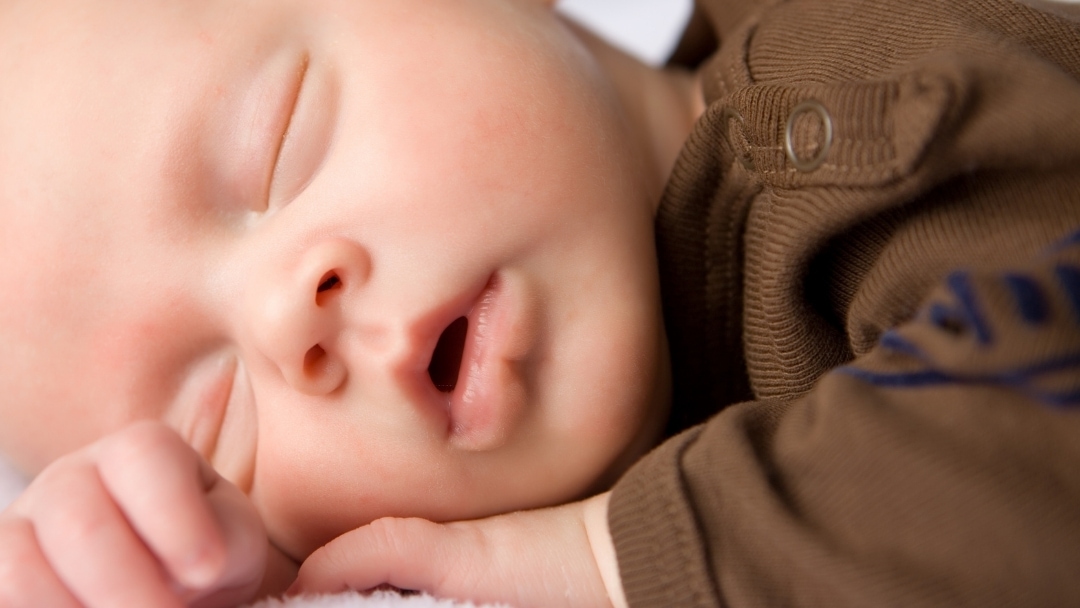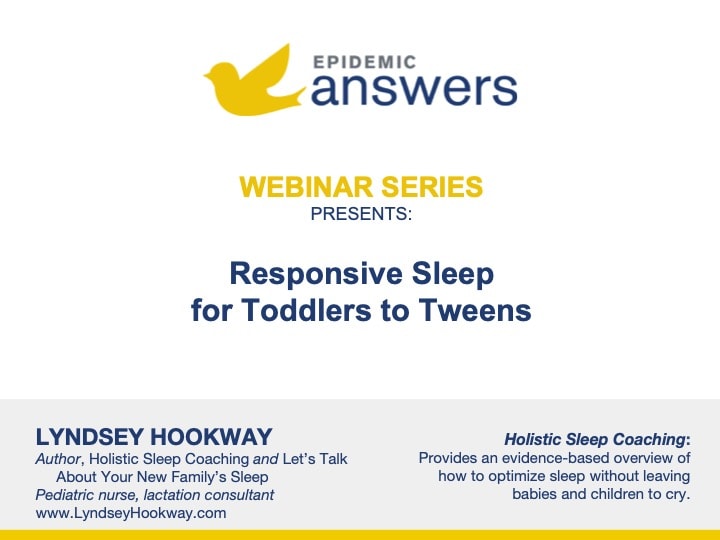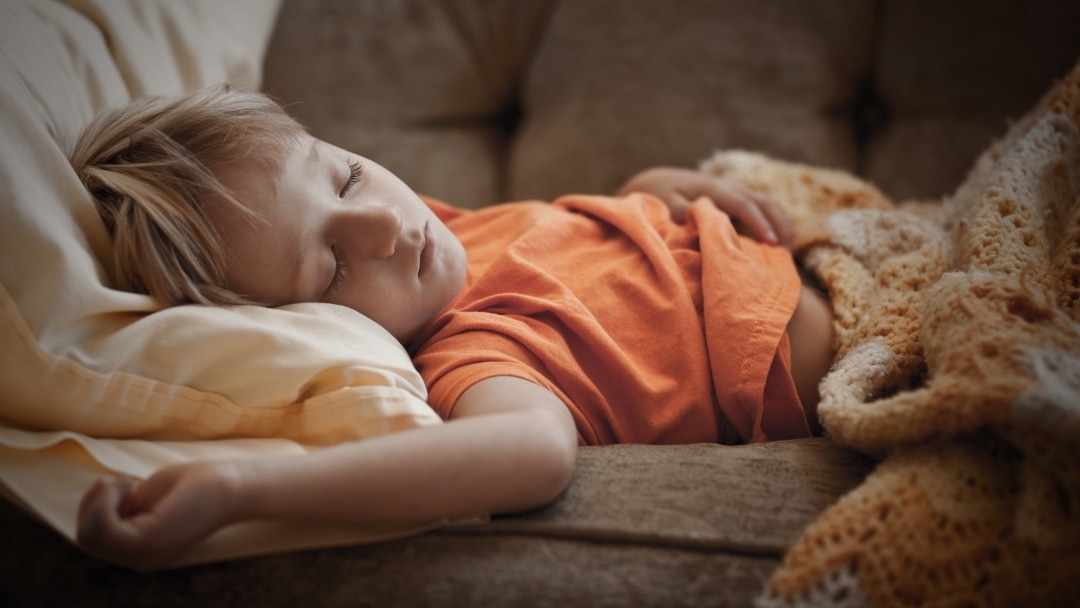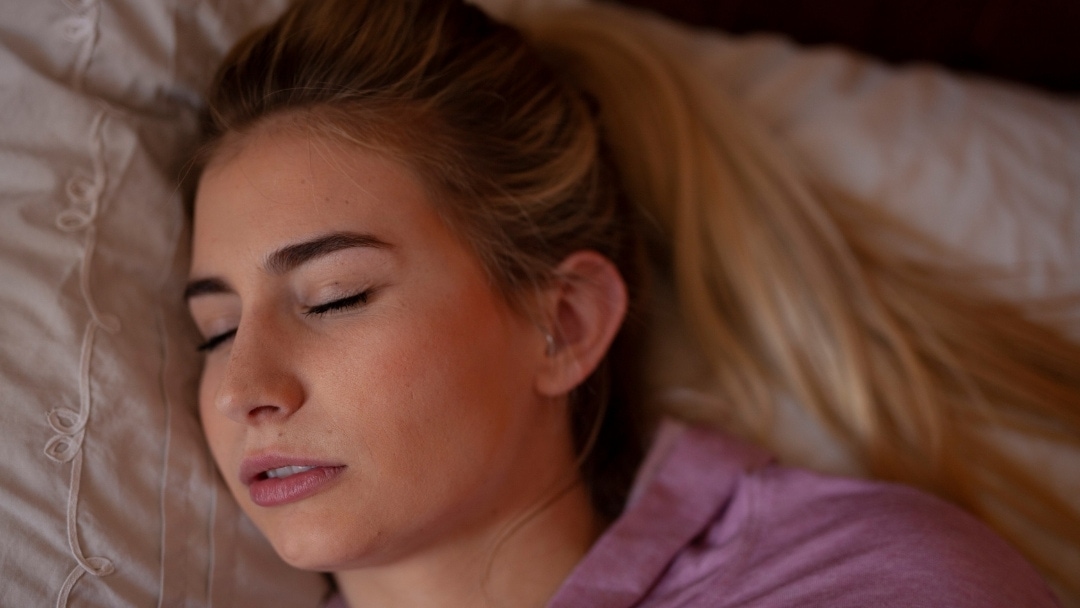If a child has sleep issues, then he or she is not getting restorative sleep that is crucial for brain development and good health. Sleep is a restorative state in which the nervous system is relatively inactive, the eyes are closed, the postural muscles are relaxed, and consciousness is suspended. All sleep is not the same; a period of sleep is comprised of several cycles and stages, some of which are more restorative than others. To be healthy, an adult body must sleep for about a third of a 24-hour day.
Children Need More Sleep Than Adults
Children require more sleep than adults because their bodies and brains are in the process of developing language, attention and impulse control. The adult recommendations are for eight to nine hours, while kids need 10-12, depending upon age. Having the brain well-rested helps facilitate and maximize learning, memory, and creativity. The strength of brain connections increases as much as 20% while sleeping. Myelin, which is the fatty layer formed around the neurons important for language, attention and impulse control, also develops during sleep.
Lymphatic System in the Brain
What’s more, medical researchers have discovered a lymphatic system in the brain that is known as the glymphatic system. This system is responsible for cleaning out the cellular “junk” (toxins) in the brain and also for bringing key nutrients to brain cells. What does this have to do with sleep? This lymphatic system is largely functional during sleep. If your child has sleep issues, his or her brain is not able to flush out toxins and other cellular debris.
Problems Associated with a Lack of Sleep
- Lack of sleep increases infection risk
- Lack of sleep can mimic ADHD
- Disrupted circadian rhythm such as with adults who work the night shift can increase the risk of cancer
- Disrupted circadian rhythm can increase the risk of diabetes
- Lack of sleep can lead to psychosis
What Your Doctor May Tell You About Sleep Issues
Doctors may ask if your child has difficulty falling asleep, wakes up during the night, has nightmares or sleeps during the day instead of the night. Pediatricians often suggest trying one or more of the following:
- No eating or drinking, especially sugar-laden products before bed
- No caffeinated foods or drinks during the day
- No TV, video games or other electronic devices too close to bedtime
- No overstimulation, such as rough-housing, prior to bedtime
- Setting a consistent bedtime with daily rituals prior to turning in
Another Way to Think About Sleep Issues
For the many children who experience both short- and long-term chronic sleep issues, many functional medicine doctors and other integrative health care practitioners look for possible causes. See our slide about Investigate Potential Sources of Sleep Issues in the Healing Checklist slide below.
Sleep Issues Healing Checklist
Many therapies focusing on detoxification, therapies for viruses, bacteria, and heavy metals, dietary interventions, sensory based therapies, and any therapies which improve the immune system will often times improve the quality of sleep in a child as the inflammatory condition decreases.
Still Looking for Answers?
Visit the Epidemic Answers Practitioner Directory to find a practitioner near you.
Join us inside our online membership community for parents, Healing Together, where you’ll find even more healing resources, expert guidance, and a community to support you every step of your child’s healing journey.
Sources & References
Arab, A., et al. The Role of Magnesium in Sleep Health: a Systematic Review of Available Literature. Biol Trace Elem Res. 2023 Jan;201(1):121-128.
Aschoff, J. CIRCADIAN RHYTHMS IN MAN. Science. 1965 Jun 11;148(3676):1427-32.
Ballard, R., et al. Bright Light Therapy for Major Depressive Disorder in Adolescent Outpatients: A Preliminary Study. Clocks Sleep. 2024 Jan 30;6(1):56-71.
Bondopadhyay, U., et al. The Role of the Circadian System in Attention Deficit Hyperactivity Disorder. Adv Exp Med Biol. 2021:1344:113-127.
Brandão, L.E.M., et al. Exposure to a more unhealthy diet impacts sleep microstructure during normal sleep and recovery sleep: A randomized trial. Obesity (Silver Spring). 2023 Jul;31(7):1755-1766.
Cain, S.W., et al. Evening home lighting adversely impacts the circadian system and sleep. Sci Rep. 2020 Nov 5;10(1):19110.
Cassone, V.M., et al. Melatonin, the pineal gland, and circadian rhythms. J Biol Rhythms. 1993:8 Suppl:S73-81.
Chang, A.M., et al. Evening use of light-emitting eReaders negatively affects sleep, circadian timing, and next-morning alertness. Proc Natl Acad Sci U S A. 2015 Jan 27;112(4):1232-7.
Chang, Y., et al. Mechanism of Sleep Disturbance in Children with Atopic Dermatitis and the Role of the Circadian Rhythm and Melatonin. Int J Mol Sci. 2016 Mar 29;17(4):462.
Cheung, I.N., et al. Morning and Evening Blue-Enriched Light Exposure Alters Metabolic Function in Normal Weight Adults. PLoS One. 2016 May 18;11(5):e0155601.
Cohen-Mekelburg, S., et al. Morning light treatment for inflammatory bowel disease: a clinical trial. BMC Gastroenterol. 2024 May 22;24(1):179.
Coogan, A.N., et al. A systematic review of circadian function, chronotype and chronotherapy in attention deficit hyperactivity disorder. Atten Defic Hyperact Disord. 2017 Sep;9(3):129-147.
Czeisler, C.A., et al. Sleep and circadian rhythms in humans. Cold Spring Harb Symp Quant Biol. 2007:72:579-97.
Dauchy, R.T., et al. Daytime Blue Light Enhances the Nighttime Circadian Melatonin Inhibition of Human Prostate Cancer Growth. Comp Med. 2015 Dec;65(6):473-85.
Esaki, Y., et al. Wearing blue light-blocking glasses in the evening advances circadian rhythms in the patients with delayed sleep phase disorder: An open-label trial. Chronobiol Int. 2016;33(8):1037-44.
Fagundo-Rivera, J., et al. Relationship between Night Shifts and Risk of Breast Cancer among Nurses: A Systematic Review. Medicina (Kaunas). 2020 Dec 10;56(12):680.
Fargason, R.E., et al. Correcting delayed circadian phase with bright light therapy predicts improvement in ADHD symptoms: A pilot study. J Psychiatr Res. 2017 Aug:91:105-110.
Figueiro, M.G., et al. Light modulates leptin and ghrelin in sleep-restricted adults. Int J Endocrinol. 2012:2012:530726.
Franzigo, M., et al. Chrono-Nutrition: Circadian Rhythm and Personalized Nutrition. Int J Mol Sci. 2023 Jan 29;24(3):2571.
Gabel, V., et al. Effects of artificial dawn and morning blue light on daytime cognitive performance, well-being, cortisol and melatonin levels. Chronobiol Int. 2013 Oct;30(8):988-97.
Gooley, J.J., et al. Exposure to room light before bedtime suppresses melatonin onset and shortens melatonin duration in humans. J Clin Endocrinol Metab. 2011 Mar;96(3):E463-72.
Gringras, P., et al. Bigger, Brighter, Bluer-Better? Current Light-Emitting Devices – Adverse Sleep Properties and Preventative Strategies. Front Public Health. 2015 Oct 13:3:233.
Halberg, F., et al. [FREE-RUN STUDY OF CIRCADIAN RHYTHMS OF THE PULSE, OF WAKING-SLEEP ALTERNATION AND ESTIMATION OF TIME DURING THE 2 MONTHS OF SUBTERRANEAN SOJOURN OF A YOUNG ADULT MALE]. C R Hebd Seances Acad Sci. 1965 Jan 25:260:1259-62.
Hartstein, L.E., et al. High sensitivity of melatonin suppression response to evening light in preschool-aged children. J Pineal Res. 2022 Mar;72(2):e12780.
Hester, L., et al. Evening wear of blue-blocking glasses for sleep and mood disorders: a systematic review. Chronobiol Int. 2021 Oct;38(10):1375-1383.
Hvolby, A. Associations of sleep disturbance with ADHD: implications for treatment. Atten Defic Hyperact Disord. 2015 Mar;7(1):1-18.
IARC Working Group on the Identification of Carcinogenic Hazards to Humans. Night Shift Work: IARC Monographs on the Identification of Carcinogenic Hazards to Humans Volume 124. International Agency for Research on Cancer, World Health Organization, Lyon (FR), 2020.
Kesztyüs, D., et al. Associations of time-restricted eating with health-related quality of life and sleep in adults: a secondary analysis of two pre-post pilot studies. BMC Nutr. 2020 Dec 17;6(1):76.
Kleitman, N. Sleep and wakefulness. Univ. Chicago Press, 1963.
Kianersi, S., et al. Chronotype, Unhealthy Lifestyle, and Diabetes Risk in Middle-Aged U.S. Women: A Prospective Cohort Study. Ann Intern Med. 2023 Oct;176(10):1330-1339.
Koniver L. Practical applications of grounding to support health. Biomed J. 2023;46(1):41–47.
Korman, M., et al. ADHD 24/7: Circadian clock genes, chronotherapy and sleep/wake cycle insufficiencies in ADHD. World J Biol Psychiatry. 2020 Mar;21(3):156-171.
Leone, M., et al. Melatonin use and the risk of self-harm and unintentional injuries in youths with and without psychiatric disorders. J Child Psychol Psychiatry. 2023 Jul;64(7):1027-1036.
Lok, R., et al. Perils of the nighttime: Impact of behavioral timing and preference on mental health in 73,888 community-dwelling adults. Psychiatry Res. 2024 May 15:337:115956.
Makateb, A., et al. Investigating the effects of a blue-blocking software on the daily rhythm of sleep, melatonin, cortisol, positive and negative emotions. Chronobiol Int. 2023 Jul 3;40(7):896-902.
Malin, S.K., et al. Early chronotype with metabolic syndrome favours resting and exercise fat oxidation in relation to insulin-stimulated non-oxidative glucose disposal. Exp Physiol. 2022 Nov;107(11):1255-1264.
Martel, J., et al. Influence of electromagnetic fields on the circadian rhythm: Implications for human health and disease. Biomed J. 2023 Feb;46(1):48-59.
Martel, J. Is a return to nature a piece of the health puzzle? Biomed J. 2023 Feb;46(1):8-10.
Megha, K.B., et al. Significance of Melatonin in the Regulation of Circadian Rhythms and Disease Management. Mol Neurobiol. 2024 Jan 11.
Mills, J.N. The circadian rhythms of human subjects without timepieces or indication of the alternation of day and night. J Physiol. 1974 Aug;240(3):567-94.
Moore-Ede., M. Lights should support circadian rhythms: evidence-based scientific consensus. Front. Photonics. 2023 Oct 03 (4).
Ogundele, M.O., et al. Management of sleep disorders among children and adolescents with neurodevelopmental disorders: A practical guide for clinicians. World J Clin Pediatr. 2022 Mar 15;11(3):239-252.
Ondrusova, K., et al. Subcutaneous white adipocytes express a light sensitive signaling pathway mediated via a melanopsin/TRPC channel axis. Sci Rep. 2017 Nov 27;7(1):16332.
Randjelović, P., et al. The effect of reducing blue light from smartphone screen on subjective quality of sleep among students. Chronobiol Int. 2023 Mar;40(3):335-342.
Sancho-Balsells, A., et al. Brain-gut photobiomodulation restores cognitive alterations in chronically stressed mice through the regulation of Sirt1 and neuroinflammation. J Affect Disord. 2024 Jun 1:354:574-588.
Schwalfenberg, G.K. The Importance of Magnesium in Clinical Healthcare. Scientifica (Cairo). 2017:2017:4179326.
Shin, J. Neuroprotective effects of melatonin in neurodegenerative and autoimmune central nervous system diseases. Encephalitis. 2023 Apr;3(2):44-53.
Uğurlu, A.K., et al. Is blue light exposure a cause of precocious puberty in male rats? Front Endocrinol (Lausanne). 2023 Jun 20:14:1190445.
van Andel, W., et al. Effects of chronotherapy on circadian rhythm and ADHD symptoms in adults with attention-deficit/hyperactivity disorder and delayed sleep phase syndrome: a randomized clinical trial. Chronobiol Int. 2021 Feb;38(2):260-269.
Wang, W., et al. Long-term artificial/natural daytime light affects mood, melatonin, corticosterone, and gut microbiota in rats. Appl Microbiol Biotechnol. 2023 Apr;107(7-8):2689-2705.
Wright, Jr., K.P. Entrainment of the human circadian clock to the natural light-dark cycle. Curr Biol. 2013 Aug 19;23(16):1554-8.
Yoon, J., et al. Assessing the Feasibility and Efficacy of Pre-Sleep Dim Light Therapy for Adults with Insomnia: A Pilot Study. Medicina (Kaunas). 2024 Apr 14;60(4):632.
Zhong, Z., et al. Administration of blue light in the morning and no blue-ray light in the evening improves the circadian functions of non-24-hour shift workers. Chronobiol Int. 2024 Feb;41(2):267-282.
Resources
Articles
Siffre Cave Study Psychology. Study Smarter.
What happens to a person’s biological clock in isolation? Encyclopedia Britannica. Accessed 9 June 2024.
Cartoons
Weinzaepflen, Coline. Enlighten your clock: How your body tells time.
Devices
SOL Telescope™ — Floorlight w/SOL bioBulb (White)
eBooks
Sleep Better, Live Better. How to Hack Your Smartphone, PC & Laptop for Better Sleep.
Sleep Better, Live Better. Why Light Is Just as Important as Food.
Software
Websites
Dr. Jack Kruse: Reversing Disease for Optimal Health




